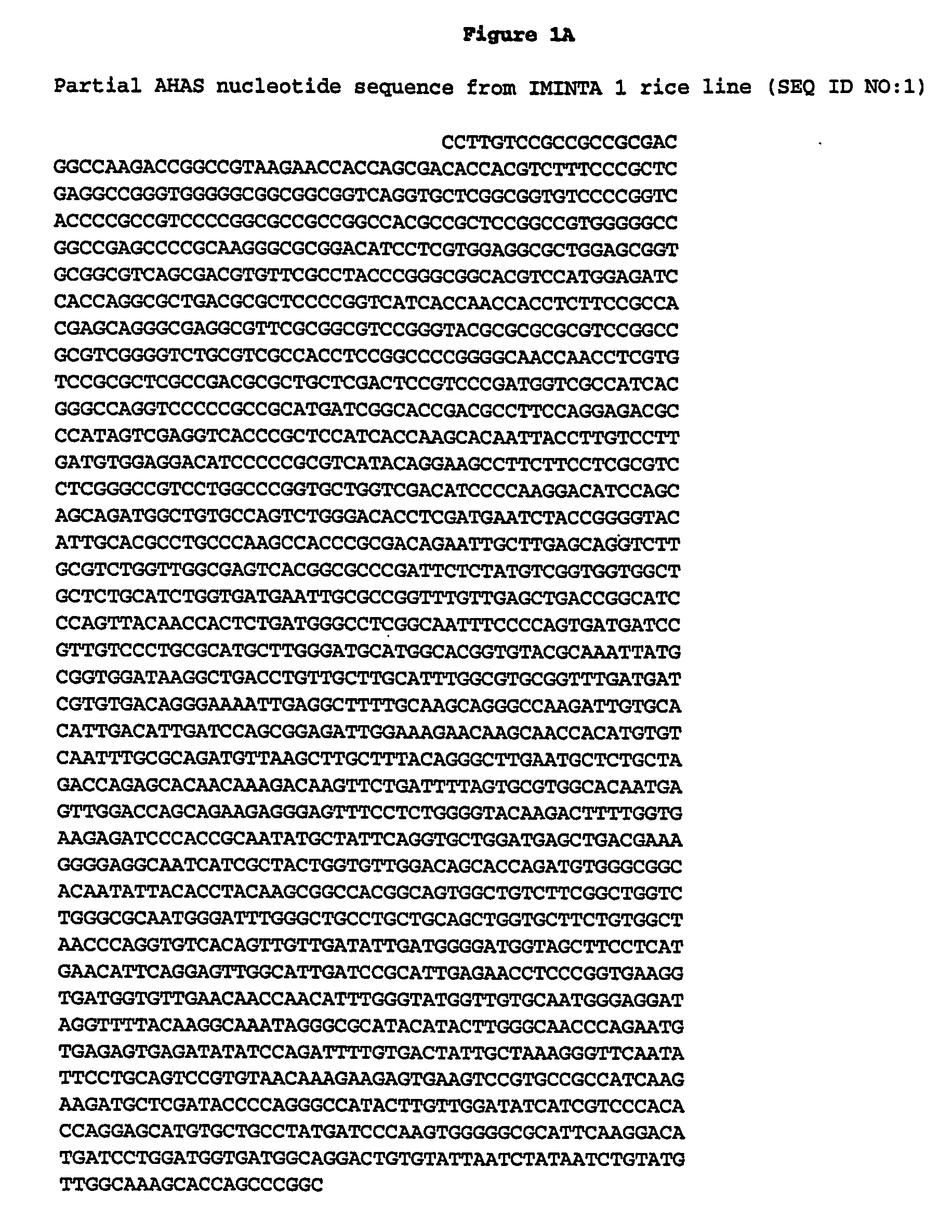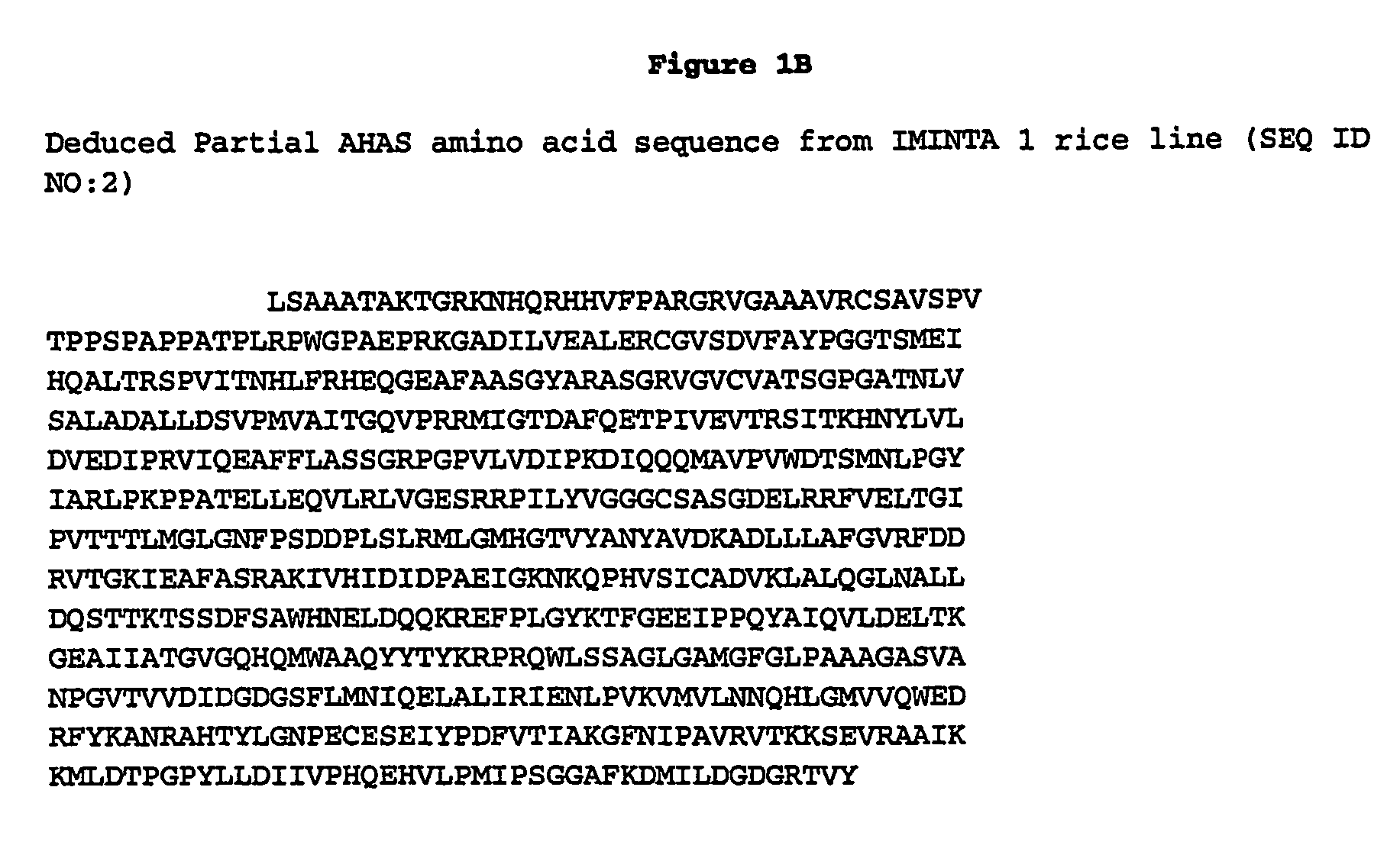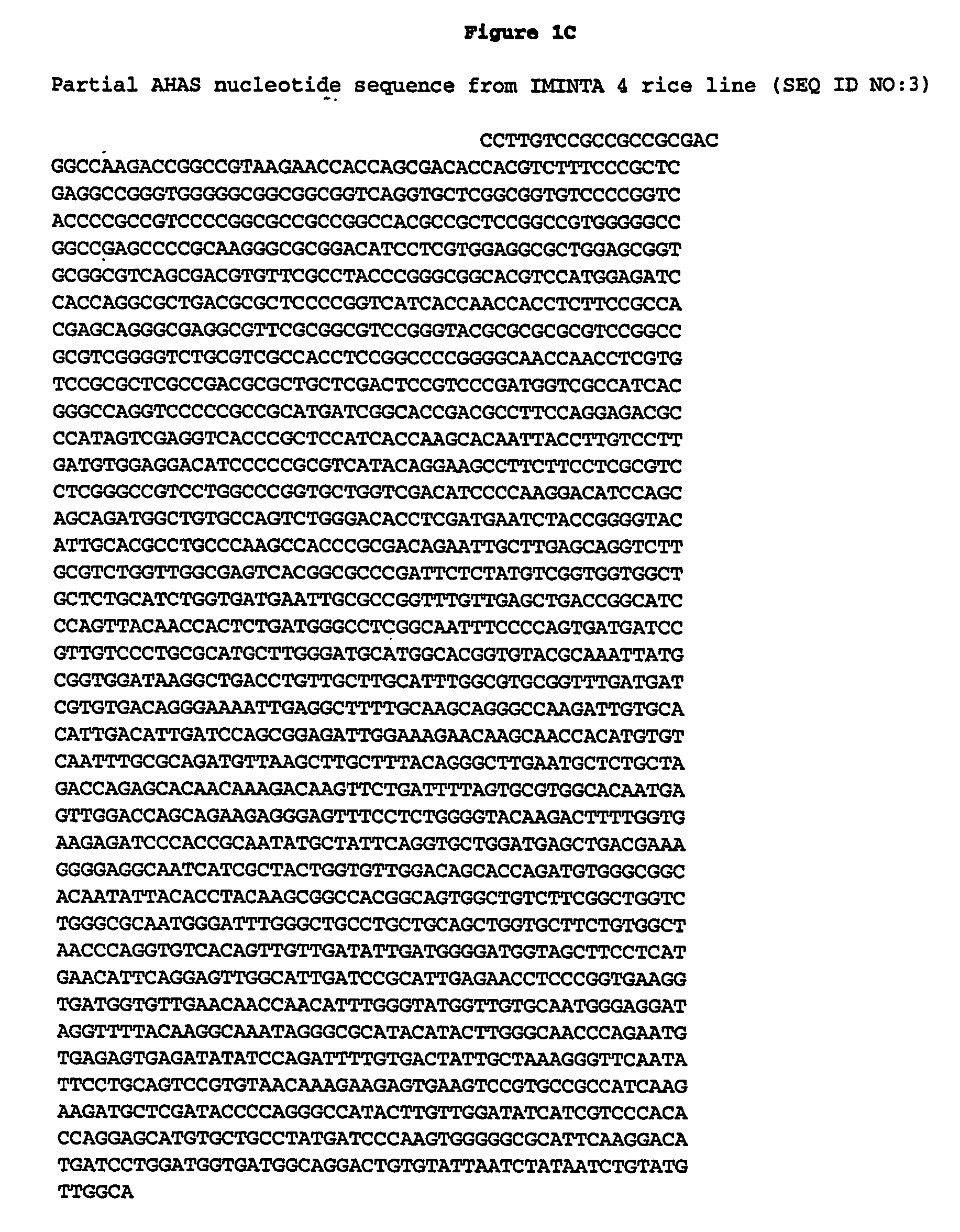Rice plants having increased tolerance to imidazolinone herbicides
- Summary
- Abstract
- Description
- Claims
- Application Information
AI Technical Summary
Benefits of technology
Problems solved by technology
Method used
Image
Examples
example 1
Mutagenesis and Selection of imidazolinone Tolerant Rice Lines
[0090] Two samples of seeds (600 g each) of the rice cultivar IRGA 417 were treated with a 0.001 M sodium azide aqueous solution at pH 3 (phosphate buffer 0.067M) to produce M1 seed. This treatment was applied by soaking each seed-sample In a two-liter Erlenmeyer containing one liter of the sodium azide solution, under constant shaking, for 18 hours, at room temperature. After treatment, the seeds were rinsed in tap water and, later on, the seeds were partially dried-aerated on blotting paper sheets in order to extract the moisture from the seeds surface. Afterwards, treated seeds were directly sown at the field nursery.
[0091] The M1 seeds were planted in the field nursery with an experimental seed planter Wintersteiger at a rate of 50 plants per square meter. Check lines of a wild-type variety IRGA 417 were planted with push type planter. The lines were grown under flooding conditions until maturity (26% grain moistur...
example 2
Molecular Characterization of IMINTA 1, IMINTA 4, and IMINTA 5
[0097] Genomic DNA was extracted from leaves of greenhouse grown seedlings from wild-type and variant IMINTA 1, IMINTA 4, and IMINTA 5 rice lines and the AHAS gene was amplified by PCR. The PCR product was sequenced using standard protocols. Sequence analysis revealed a single base pair change in the coding region of the AHAS gene that caused an amino acid change from Alanine at amino acid 96 in the wild-type line to Threonine 96 in the mutant lines. This mutation corresponds to an amino acid change at Alaninel22 in the Arabidopsis AHAS sequence to Threonine 122. The AHAS nucleotide sequence for IMINTA 1, IMINTA 4, and IMINTA 5 are shown in FIGS. 1A, C, and E, respectively as SEQ ID NOs:1, 3, and 5; and the deduced AHAS amino acid sequences of IMINTA 1, IMINTA 4, and IMINTA 5 are shown in FIGS. 1B, D, and F as SEQ ID NOs:2, 4, and 6, respectively. The nucleotide and deduced amino acid sequences of AHAS from the IRGA 417...
example 3
Tolerance to AHAS Herbicides Provided by IMINTA 1
[0099] A field trial was performed with the IMINTA 1 mutant line and IRGA 417 line, comparing performance in the presence and absence of imidazolinone treatment. The 1× imidazolinone treatment consisted of Arsenal (Imazapyr 75 g a.i / ha) and Cadre (Imazapic 24,85 g a.i / ha) in a water solution with a non-ionic surfactant (Citowet) at the rate of 0.25%. The varieties and treatments were set as indicated in FIG. 5 as a random block design with three replications.
[0100] The results of the treatment are set out in FIG. 6. There was no statistical difference among treatments in the number of plants / m2, thus showing that the 3× herbicide application had no detrimental effect. Susceptible check lines sown along the plots did not survive the herbicide treatment. The higher value in the after treatment IMINTA 3× plots could be due to tillering.
[0101] Grain yield and yield components were evaluated to understand the effect of the treatment on...
PUM
| Property | Measurement | Unit |
|---|---|---|
| Herbicidal properties | aaaaa | aaaaa |
Abstract
Description
Claims
Application Information
 Login to View More
Login to View More - R&D
- Intellectual Property
- Life Sciences
- Materials
- Tech Scout
- Unparalleled Data Quality
- Higher Quality Content
- 60% Fewer Hallucinations
Browse by: Latest US Patents, China's latest patents, Technical Efficacy Thesaurus, Application Domain, Technology Topic, Popular Technical Reports.
© 2025 PatSnap. All rights reserved.Legal|Privacy policy|Modern Slavery Act Transparency Statement|Sitemap|About US| Contact US: help@patsnap.com



